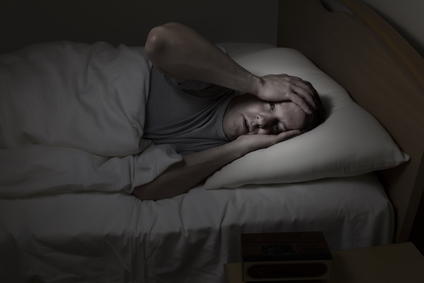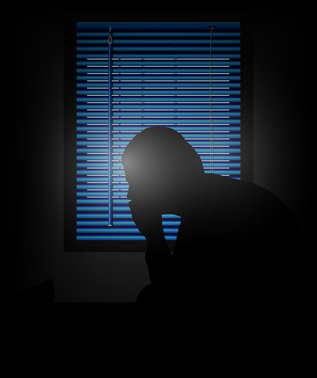
by Keir Brady | Apr 29, 2020 | Individuals
The coronavirus pandemic has caused a disruption in daily routines and current and future plans. Trips and special events have been cancelled or postponed. Other than immediate family, there is a lot less social interaction. Friends and family members may be fighting the virus alone, and some might have lost their battle in isolation. Due to all of the loss during the coronavirus, including the loss of normalcy, you may be experiencing grief.
Grief During The Coronavirus
The COVID-19 pandemic has caused a lot of change. All of the uncertainty due to the coronavirus can have a negative impact on your emotional well-being. Daily routines, job security, and financial stability can be drastically different today. Many people are feeling a deep sense of loss. There are many types of grief you might be experiencing at this time. You could be grieving the loss of social interaction. There could be grief around feelings of safety and security. Maybe you lost your job or your income decreased. If you lost a loved one to the virus, your grief might be compounded. The typical rituals around death, and the comfort and support they often provide is drastically different at this time. There may even be guilt around not being able to be with your sick loved one. No matter why you may be grieving, remember that grief is a process.
Signs of Grief
Any loss can cause grief. Grief is a normal response to experiencing a loss. During the coronavirus pandemic, you might also experience anticipatory grief. Anticipatory grief refers to the belief that more loss is going to occur. Those experiencing anticipatory grief often experience sadness, anger, and loneliness. There may be a great deal of fear about what is going to happen next. During the coronavirus, as you struggle with what might happen and distant support, signs of grief may be different. You could experience shock, anger, and sadness. However, you may also have trouble concentrating, experience body aches, have sleep issues, or eat more or less than usual. You could also experience feelings related to past loss and may hyperfocus on everything related to the coronavirus. On the other hand, you could refuse to talk or think about the virus at all.
The Grieving Process
The five stages of grief according to Elizabeth Kübler-Ross include, denial, anger, bargaining, depression, and acceptance. You may go back and forth between the stages, stay at one stage for awhile, or skip some stages. Denial numbs the shock until you are able to cope. Anger provides an outlet for your feelings, even though it masks the deeper emotions that you are not ready for. Bargaining can help you postpone your sadness as you try to find ways to control the outcome. There are a lot of “what if” statements in bargaining. Depression enables you to get in touch with some of your deeper feelings. You may isolate yourself and stop engaging in activities you used to enjoy. Acceptance means you acknowledge the loss and understand what it means in your life. If you are experiencing coronavirus grief, there are some things you can do to help.
Acknowledge Your Feelings
Loss experienced or anticipated is hard to process. Your feelings are valid and there is no right or wrong way to grieve. Grief is experienced differently by different people and it takes time to heal. Sometimes, just acknowledging that you are grieving can be helpful. When you ignore your feelings, you avoid processing them. By acknowledging and validating your feelings, you can begin to feel them, process them, and start healing. It is okay to feel whatever you are feeling. There is no reason to compare your loss to others. You can grieve, you can feel, and you can heal, no matter what type of loss you are dealing with during the pandemic.
Practice Self-Care
Make sure you are practicing good self-care. In the beginning of the grieving process, this can simply mean eating and getting enough sleep. Exercising, following a daily routine, and engaging in relaxing activities can also be beneficial. As you go through the grieving process, effective coping skills can be added. Mindfulness, meditation, and visualization techniques can be helpful during the grieving process. Writing about your experience and feelings, or keeping a daily gratitude journal can also be beneficial. No matter how you practice self-care, be gentle with yourself and remember that grief is a process.
Seek Support
Although social distancing is needed at this time, if you are experiencing grief, you will need support. Reach out to friends and loved ones. Share your experience and your feelings. You don’t have to go through this alone. Set up regular video conferences with your support group. Call your close friends and encourage them to share as well. Sometimes just knowing that you are not alone can make a big difference in your grief. If you are having difficulty coping and it is having a negative impact on your daily functioning and emotional well-being, you can seek help from a professional. Many therapists and psychiatrists are offering virtual sessions now.
If you are struggling with a sense of loss during the coronavirus, remember that grief is a normal response. Grief is a process and healing requires time. Give yourself and others the time and attention needed to grieve effectively. Although things may be different now, healing is still possible.

by Keir Brady | Mar 18, 2020 | Individuals
While you want to try to remain physically healthy during the coronavirus outbreak, it is also important to take care of your mental health. Anxiety and fear may be a normal expectation as you try to navigate the changes and uncertainties of the evolving situation. Even though symptoms of anxiety may increase at this time, it does not have to have a negative impact on your emotional well-being. If you are feeling increased fear and worry, there are some things you can do to help manage coronavirus anxiety.
Anxiety and Fear
Anxiety and fear are a normal response to a situation that can impact your life and routine in a number of ways with a lot of unknowns, such as the coronavirus (COVID-19) outbreak. You may worry about getting sick and how that might affect you. Maybe you are worried that the healthcare system won’t be able to keep up with the demands. There can be financial concerns if you get sick, or if others are no longer supporting your industry. Perhaps you are worried that the situation, or impact of the situation will be long lasting. When there are a lot of uncertainties, it can be easy to imagine the worst case scenario. Although some anxiety can be helpful, as it gives you the motivation to prepare. Too much anxiety can have a negative impact on your emotional well-being. If anxiety is increasing due to the coronavirus, there are some things you can try to help protect your mental health.
1. Learn The Facts
During a pandemic like the coronavirus, it is important to learn the facts. While there may be a lot of information going around, not all of it will be factual. It is important that you get your information from reputable sources, such as the Centers for Disease Control and Prevention (CDC), or the World Health Organization (WHO). Learning the facts about the coronavirus, such as symptoms, duration, and how to protect yourself from exposure, enables you to take precautions in meaningful ways. Knowing the facts can help decrease levels of anxiety as it gives you some idea of things you can do that are within your control.
2. Limit Media Exposure
While it is important to stay informed and updated on the coronavirus, too much exposure can cause an increase in your anxiety. This is especially true when you are dealing with uncertainty. If you notice that you are constantly watching or reading the news and your worries and concerns are increasing, you may want to limit your exposure. Limiting your exposure to information about the virus to between 30 and 60 minutes a day can improve your mental health. This also enables your brain to sort and process the information you are getting, instead of feeling overwhelmed by the amount of new information you are receiving.
3. Minimize Your Risk
Although there are many things related to the coronavirus that are not within your control, there are some things you can do to minimize your risk. You can stay home when you are sick and practice social distancing. Avoid contact with those that are sick. Wash your hands with soap for at least 20 seconds. Try to avoid touching your face often. Keep surfaces clean and disinfected. Cover with a tissue or your elbow when you cough or sneeze. Make sure you have basic supplies and medications you need for yourself and your family members. By taking precautions to minimize your risk, you can decrease feelings of anxiety.
4. Seek Support
Social distancing might be an important practice to minimize the spread of illness. However, social support can help decrease levels of anxiety during this time as well. While social gatherings with friends and loved ones might not be the best idea, there are other ways to stay connected. You can call, video chat, or message friends and loved ones to stay in touch. Share your thoughts, fears and concerns. Listen to what they have to say. While you might be challenged to interact with others differently during this time, it can feel just as supportive and rewarding.
5. Practice Mindfulness
Practicing mindfulness is a great way to decrease symptoms of anxiety. Mindfulness refers to being fully present in the moment without judgment. Meditation and grounding techniques can help you practice mindfulness. When you are focusing on what is going on around you, less attention is paid to what is going on within you. This way you are absorbed in what you are doing, instead of what you are thinking. You can try an app, such as Calm or Insight Timer to help you relax or meditate. One of the easiest ways to practice mindfulness is to engage all of your senses. Notice what you are seeing, hearing, touching, smelling, and tasting. Practicing mindfulness is calming, grounding, and relaxing and can help decrease feelings of anxiety.
6. Practice Self-Care
Make self-care a priority. Keep up with your normal routines and daily schedule as much as possible. Eat healthy, exercise, and maintain good sleep habits. Put yourself on your schedule and do things that relax and refresh you. Take a relaxing bath, make a cup of tea, light a scented candle, play a game, or spend time with your family members. It is not really about what you do. The important thing is that you are caring for yourself, both physically and emotionally.
7. Journal
If you notice your thoughts are racing, or you are catastrophizing, journaling can help. When you journal, you are able to put your thoughts on paper. This can keep you from ruminating on them. It also provides an opportunity to organize your thoughts. Reading over what you wrote enables you to observe your thoughts more objectively. You can then challenge some of your negative thought patterns and look for alternative ways to change them that are both accurate and kind. Doing this can help decrease symptoms of anxiety.
If you are experiencing coronavirus anxiety that is having a negative impact on your emotional well-being at this time, counseling can help. Many therapists are offering virtual sessions now. This way you can take care of your mental health while also protecting your physical health.

by Keir Brady | Mar 11, 2020 | Individuals
When you experience something emotionally intense and frightening or traumatic, it overwhelms your ability to cope effectively. If it is something that’s difficult to make sense of and resolve, it can become stuck in your body. The traumatic event lingers in the central nervous system. Because of this, you might become over-reactive whenever you encounter something that reminds you of the trauma. It is difficult to access the part of the brain that stores trauma with traditional talk therapy. Therefore, a different type of approach is necessary. A therapeutic approach known as brainspotting can help you access, process and heal trauma.
Brainspotting
Brainspotting is a therapeutic technique developed by David Grand in 2003 to help treat trauma and posttraumatic stress disorder (PTSD). It is a brain-body, relational, mindfulness based approach. Brainspotting developed out of Grand’s work with Eye Movement Desensitization Reprocessing (EMDR) and Somatic Experience (SE). It is based on the premise that where you look impacts how you feel. Therefore, by maintaining a specific eye position, you can access, process, and release trauma that’s frozen in the subcortical brain. Since brainspotting is a therapeutic tool, you can use it in conjunction with other therapeutic approaches. According to Grand, brainspotting is a physiological approach with psychological consequences.
What Is Brainspotting Like
In brainspotting, the therapist helps the client find an eye position to use. The eye position is related to the negative emotion and body sensations stored deep in the brain. An eye position is often located with a pointer. The therapist uses the pointer to slowly go across the client’s field of vision. When the client gazes at the brainspot, they are able to access traumatic memories and painful emotions. The client can say as much or as little as they want during the process. Listening to bilateral sound helps the client further process. The dual attunement process is one of the most integral parts of the technique. This is where the therapist attunes to both the relational connection and the brain-body response of the client. The therapist maintains a mostly nonverbal, empathic connection with the client. This enables the client to utilize the brain’s natural ability to heal.
How Does Brainspotting Work
Brainspotting is a theoretical approach, so the exact way it works is unknown. However, brainspotting is able to access parts of the brain that are not easy to reach through traditional talk therapy. Focusing on a brainspot helps bypass the thinking brain. This allows you to go deeper into the subcortical brain in the limbic system and brainstem where trauma is stored. The subcortical brain is about instinct, creativity, thought, and spirituality. It also controls all bodily functions. Trauma overwhelms the brain’s processing ability, leaving parts of the experience unprocessed, and frozen in time. The fixed eye position used on the brainspot enables the brain to access and process these unprocessed experiences. This occurs due to the neuroplasticity of the brain, or its ability to change and form new connections. Once the brain can process these experiences and return to a state of adaptive homeostasis, related symptomatology significantly decreases.
Is Brainspotting Effective
Brainspotting is a safe and effective approach overall. However, It has not been thoroughly studied as it is relatively new. Many therapists that have used brainspotting with their clients report an increase in their client’s emotional well-being. It was also found to be the most effective approach used for the survivors of the Sandy Hook school shooting in Newtown, Connecticut. It is possible to use this approach in conjunction with other modalities to treat trauma and PTSD symptoms. Also, it may be effective in treating chronic pain, substance abuse, ADHD, anxiety, impulsivity, and anger. In addition, Grand has successfully used brainspotting to enhance the performance of artists, athletes, and other professionals.
The Differences Between Brainspotting And EMDR
While both brainspotting and EMDR have many similarities, there also some differences. While both help access trauma through bilateral stimulation, they go about it differently. EMDR follows a very specific protocol. Brainspotting is more flexible and can be used in conjunction with other therapeutic approaches. EMDR uses rapid eye movements for processing. Brainspotting utilizes a fixed eye position. EMDR can be overstimulating for some, and is not appropriate to use for everyone. Brainspotting can be adapted for almost everyone. This is because it relies more on the relational attunement between the therapist and client, than a strict protocol.
If you have experienced trauma and are having symptoms of PTSD, brainspotting can help. A therapist trained in brainspotting can help you access the trauma so you can process it and let it go. When you are able to release the trauma, PTSD symptoms can decrease and emotional well-being can increase.

by Keir Brady | Feb 26, 2020 | Individuals
A good night’s sleep is beneficial to your emotional well-being, ability to function effectively, and general mood. When racing thoughts, stress, and anxiety keep you awake at night, it can be quite distressing. However, there are some things you can try when you can’t sleep due to racing thoughts.
What Are Racing Thoughts
Racing thoughts refer to thoughts that are persistent, often intrusive, and occur in rapid succession. It can feel as though your mind is going a mile a minute when your thoughts are racing. Even though you don’t want to have these thoughts, it feels as if you have no control and cannot turn them off. Often times, the thoughts seem to be in control of you. These thoughts can be about anything. Sometimes they are related to current life stressors. Other times, they are more about past issues or things you wish you said, or didn’t say. Racing thoughts can lead to catastrophizing, or imagining the worst case scenario. It seems as though the more you try to stop thinking about it, the more intense the thoughts become. Although anyone can have racing thoughts at times, they are often associated with anxiety disorders.
How Racing Thoughts Interfere With Sleep
Racing thoughts can have a negative impact on your ability to fall asleep, and or stay asleep. It’s hard to get to sleep when you feel as though you can’t shut your brain off. Imagining something difficult, or a catastrophe, can impact the brain in a similar way as actually experiencing it. Thoughts are very powerful. If you think about something awful happening, your body and brain can react as if it is happening. This can put you in a state of high arousal which can make it difficult for you to sleep. When your brain senses danger, either real or imagined, the fight, flight, or freeze response kicks in. Adrenaline is released and blood pressure, heart rate, and breathing increase. Since it takes between 20 and 60 minutes to return to a pre-arousal state, it can be hard to fall asleep. However, there are some things you can do that might help when you can’t sleep due to racing thoughts.
1. Exercise Earlier
Exercise is good for your mind and body. However, if you exercise late in the evening, you might have a hard time winding down when it’s time for bed. Exercising during the day can improve the quality of your sleep and help you fall asleep faster at night. If you complete a high-intensity workout late in the evening, the opposite can be true. Your body and mind can still be energized and your thoughts can race. If you exercise at night shortly before bed and are struggling to shut off your thoughts and get good quality sleep, try exercising earlier in the day.
2. Schedule A Time To Feel Your Feelings
Scheduling a time to feel your feelings allows you to address your worries on your terms so they are less likely to interfere with your sleep. When you schedule a time each day to focus on your fears and worries, it is easier for you to process them. It might seem like avoiding your anxious feelings keeps them from impacting you. Usually, doing this can make them more intense and more difficult to manage, especially when you are trying to get to sleep. When you give your feelings time and attention at your convenience, they can stop trying to interfere with your sleep. Plan a 10 minute period to feel your feelings during the day. When you’re done, transition by doing something completely different. Try not to do this right before bed as this can make it harder to fall asleep.
3. Set Up A Good Sleep Environment
Setting up a good sleep environment can help you fall asleep faster and stay asleep longer. Ideally, your bedroom should be used for sleep and sex. This helps set up an association with your room and sleep. If you use it for other things, it can be harder for you to make this association. Keeping your room dark and minimizing artificial light can help prepare your mind to wind down for sleep. Since your body temperature naturally drops in preparation for sleep, keeping your room on the cool side between 60-67 degrees can help you fall asleep quicker and stay asleep longer. Having comfortable bedding and lots of blankets, or even a weighted blanket can be helpful. A quiet room, or consistent noise, is best for sleep. Using a sound machine can provide continuous soothing sound, while eliminating inconsistent background noise. A good sleep environment can make it easier to quiet your mind and get restful sleep.
4. Create A Relaxing Bedtime Routine
Preparing yourself for sleep by creating a relaxing bedtime routine can help with your sleep quality. The blue light emitted from phones and other electronics can have a negative impact on sleep. Turn off electronics and do something that relaxes you before bed. Meditation, yoga, and other mindfulness activities can help you begin to relax and prepare your body for rest. Focus on your breath and send it to your belly, breathing out longer than you breathe in. Spray lavender, or other scents that help you relax, on your pillow. Keep a gratitude journal and write down the things you are grateful for every night before bed. Read a book so you can focus on something other than your thoughts. A good bedtime routine can help prepare you for restful sleep.
5. Repeat A Mantra
Repeat a mantra to yourself to keep your racing thoughts from interfering with your ability to sleep. A mantra can help you get more restful sleep in a couple of ways. It can help you distract yourself from your thoughts, as repeating a mantra in your head can keep your thoughts from taking center stage. A mantra can also offer you something pleasant to focus on. Repeating a phrase such as, I am calm and relaxed and ready for sleep, can help your brain believe that this is true. When your worries and thoughts are keeping you from sleep, a mantra can help you focus on something else.
6. Write It Down
Try writing your worries down. Writing down your thoughts can keep you from ruminating on them. This also helps you utilize logic so catastrophizing doesn’t allow your imagination to run wild. When you write your thoughts down, you can step away from them and revisit them later if you choose. Writing down your thoughts helps you organize them enough to put them on paper. This can be enough to break the negative thought loop. Writing down what is bothering you when you can’t stop thinking about it, can help clear your mind so you can sleep.
Although it might be hard to get to sleep when racing thoughts and anxiety occur at night, with some adjustments, it is still possible. If this is a regular occurrence that is interfering with your ability to function, counseling can help. Practicing the above tips can make a big difference when you can’t sleep due to racing thoughts.

by Keir Brady | Feb 5, 2020 | Individuals
Most people experience feelings of loneliness at times. For some, these feelings become persistent and can even lead to hopelessness that the situation will ever improve. When you are struggling and feel as though there is no one to turn to for support, loneliness can feel overwhelming. However, there are some strategies you can try to help you cope with loneliness and feel more connected.
What Is Loneliness
Loneliness isn’t necessarily about being alone, it is more about the subjective quality of your relationships lacking meaningful connection. It is an internal feeling of discomfort. You can be surrounded by many people, yet feel emotionally and socially disconnected. As an infant, you depend on others in order to survive. Forming an attachment with your primary caregiver is important and even necessary for your survival. Feeling deeply connected to those you form attachments with helps you thrive. When you feel lonely instead, your mental and physical health can suffer and you may experience depression and anxiety. Loneliness occurs when the social connections that you want are very different from the social interactions you have.
What Causes Loneliness
There are a number of things that can contribute to loneliness. Life transitions such as, moving, changing jobs, divorce, or developing a chronic illness can lead to loneliness. Loneliness can occur at any time to anyone, but is often associated with the elderly. Since it is more about a lack in the quality, versus the quantity of your relationships, those that have trouble reaching out and being vulnerable can experience more loneliness. While it is normal to feel lonely at times, there are things you can do to help.
1. Feel Your Feelings
One way to combat feelings of loneliness is to acknowledge it as a feeling and feel it. Feelings come and go. It would be odd to experience the same feeling, and only that feeling forever and ever. However, with loneliness it can be thought of as who you are, instead of how you feel. To help view loneliness as a feeling you are having, you need to acknowledge the feeling and let yourself feel it, but on your terms. Limit the amount of time that you feel your loneliness and make sure you have a way to transition that gets your mind off of it when you’re done. When you see loneliness as a feeling, you can sit with this feeling and allow it to be so you can begin to experience other, more positive feelings as well.
2. Practice Mindfulness
Mindfulness refers to being fully present in the moment. This means giving your full attention to your current experience. When you are mindful, you are focused on what is going on all around you. To do this, your attention cannot be on your own thoughts and inner experience. Mindfulness is useful when you are alone as the attention is still on what is happening around you, while noticing your inner experience without judgment. It is also helpful when you are with others as you are able to be fully present. This enables you to learn more about those you engage with, which can help you deepen your connections so you don’t feel as lonely.
3. Make Small Talk
Making small talk can help you feel more engaged and less lonely. Although small talk may not provide great depth, it is a start towards connecting. Small talk is a way to put yourself out there and share a part of yourself with others. Smiling, making eye contact, and exchanging pleasantries can help foster connection. When you practice small talk as you go about your day, it will be easier to start conversations with those you want to get closer to. Loneliness is about not feeling connected and small talk helps you begin to connect.
4. Reach Out
Sometimes loneliness makes your world feel very small. When you think about it though, you probably have a few people in your life that have always been supportive that you could reach out to. Even if you haven’t spoken in awhile, or you are not sure what to say, reaching out can help ease loneliness. Catching up and talking about fond memories can help you remember times when you did not feel lonely. It can also be easier to be your true self with old friends.
5. Join A Club
Interacting with like-minded people can help you feel more connected and less lonely. Joining a club related to something you enjoy is a good way to do this. Whether it’s cooking, acting, or photography, joining a club can help you develop deeper connections as you bond over a common interest. You could interact with others at the gym, in your book club, or even during your morning run, if an organized club doesn’t interest you. Sometimes, just being around those who enjoy the same things you do can help ease feelings of loneliness.
6. Spend Time With Your Pet
Spending time with your pet is another way to help combat loneliness. Pets provide companionship, unconditional love and affection, and a boost in oxytocin. They can help you feel needed and ease symptoms of depression and anxiety. Pets can encourage you to be more playful and to exercise. While they are not a substitute for human interaction, they can make it easier for you to meet others.
7. Volunteer
Volunteering provides a meaningful way to connect with others and make new friends. Helping others naturally makes you feel good. Volunteering provides social interaction and keeps you from isolating. When you volunteer, it keeps the focus off of you. Instead, you are focused on doing something for someone else. This can help decrease loneliness as your attention changes from an inward focus on lack to an outward focus on helping.
8. Try Something New
Trying something new engages your brain in a different way which can help decrease feelings of loneliness. When you try something new, you need to pay attention and focus on what you are doing. Learning something new requires bravery and can help fight boredom. Gaining a new skill gives you something new to talk to others about. It forces you to break out of your comfort zone and can help you feel more alive. When you try something new you can be totally engaged, which helps you focus less on loneliness.
9. Practice Gratitude
Practicing gratitude requires you to shift your thoughts from what you are missing to what is going well. When you practice gratitude, you notice and highlight the good things. While you don’t want to ignore your feelings of loneliness, you also don’t want these feelings to be your main focus. Keeping a daily gratitude journal helps draw your attention to what you are grateful for.
10. Take A Break From Social Media
Maybe you think turning to social media is a good way to feel less lonely. However, spending too much time on social media can keep you from engaging in meaningful face-to-face connections. The idealized version of others often highlighted on social media can increase your feelings of loneliness. Scrolling through photos of smiling faces engaging in interesting activities could cause you to feel like everyone but you is happy. When you spend a lot of time on social media, you can end up feeling even more lonely. Decreasing the amount of time you spend on social media can free up time to focus on deepening your important connections.
If you are struggling with loneliness that is having a negative impact on your well-being, try the above tips. While it is normal to experience feelings of loneliness, if they persist, counseling can help. When you are able to feel deeply connected to others, feelings of loneliness will most likely decrease.

by Keir Brady | Jan 15, 2020 | Individuals
Experiencing a trauma, a stressful often disturbing event that overwhelms your ability to cope, can have a negative impact on your emotional well-being. You could struggle with symptoms that can be difficult to manage. Although most of the acute stress symptoms can resolve within a month, some can linger much longer possibly leading to posttraumatic stress disorder. Below are 10 common reactions that might occur after you experience a trauma.
1. Shock Or Denial
After experiencing a traumatic event, one of the first responses you have may be shock or denial. Feeling disconnected from what occurred, and denying the impact it had, is not uncommon. You might even try to deny that it really happened at all. However, this is a normal part of the fight, flight, or freeze response. It helps protect you from the full emotional impact of your experience. You could feel numb, detached, and confused. There is great difficulty believing what happened. Physical symptoms such as, tightness in your chest, feeling light-headed, or vomiting can also occur. This happens as adrenaline is released due to the stressful event.
2. Fear Or Anxiety
Anxiety, constant worry, and being afraid of the incident happening again can occur after experiencing a traumatic event. Your perception and worldview can change, and you might observe the world as a very scary place. The focus can shift to a belief the world is unsafe. You could also begin fixating on all of the awful things that might happen. It is possible to have difficulty sleeping. Instead of feeling safe and in control, you could feel out of control in an unsafe environment. Nervousness, heart palpitations, and panic attacks can occur. There may be fear and worry about the trauma happening again, or a different trauma occurring.
3. Exaggerated Startle Response
You could experience an exaggerated startle response as your body automatically goes into a protective mode. When you startle, you naturally try to cover any weaker areas where you could be vulnerable. Being touched unexpectedly, loud noises, and quick movements can cause you to startle. Feeling more on edge is quite common. It is as if it takes very little to cause you to feel as though you need to protect yourself.
4. Nightmares
Nightmares can occur after exposure to a trauma. These dreams can be very vivid. At times, you could wake in a panic and could have great difficulty calming down. Your nightmares can focus on what happened during the trauma, or they could seem completely unrelated. However, there is usually a theme related to fear or being out of control during the nightmare. Bad dreams can happen often or only occasionally. If these dreams occur regularly, you could be afraid to go to sleep at night.
5. Flashbacks
After a traumatic event, you could experience flashbacks. A flashback involves an often intense and disturbing sudden memory of a past traumatic event. It can feel as if you are experiencing the trauma again. Also, you may even respond as if the trauma is happening now and scream, cry, fight, or run. Experiencing a flashback can be very disturbing and can bring up feelings of helplessness, powerlessness, confusion, and disorientation.
6. Hypervigilance
You could become more hypervigilant following a traumatic event. Hypervigilance refers to being in a state of high alert to a potential threat or danger. There may be increased anxiety and fear. Usually, you become very aware of small changes in the environment that might signal a problem. There is a strong need to figure out what you should do to keep yourself out of danger. However, there is also a belief that danger is all around you all of the time.
7. Irritability
Following a traumatic experience, you might find yourself more irritable. It is easier to become agitated by things that normally wouldn’t bother you. Small annoyances can seem much bigger and might really get on your nerves. You could snap at others easily and have little patience. Anger comes up quickly and can be difficult to shake. In fact, others may keep more of a distance because they notice your short fuse.
8. Dissociation
While dissociating during a traumatic event is common, it can continue to happen even when the incident is over. Dissociation is a part of the freeze response that occurs when you feel overwhelmed and go into survival mode. When you dissociate, you disconnect from your body and what is being experienced as a way to protect yourself from pain and trauma. A common way of experiencing dissociation is when you zone out for a moment, or daydream. After a trauma, you might dissociate when something in your environment reminds you of the traumatic event. It is even possible to feel emotionally numb and disconnected a lot of the time.
9. Reexperiencing The Event
When you experience something traumatic, your brain tries to make sense of what happened. Because of this, you can replay the event over and over again in your mind. The memory continues to play in your head in a loop, even when you try not to think about it. It can be difficult to focus on what is going on in the moment, as your mind is focused on the traumatic experience. As the memory replays, you may become upset, scared, and panicked as if you were experiencing the trauma over again.
10. Avoidance Behaviors
Trauma can affect your worldview and cause you to pay more attention to all of the dangers around you and what could go wrong. In order to cope with difficult memories and unsettling feelings, you might avoid anything that reminds you of the traumatic event. Maybe you stop watching television, or hanging out with other people that remind you of the trauma. You could also stop going to certain areas or events to try to avoid thoughts of what happened.
These reactions can occur directly after experiencing a trauma, or there can be a delayed reaction in experiencing symptoms. It is also possible to have all of these reactions, or only a few. If you are struggling with any symptoms following a trauma, therapy can help. EMDR, or TF-CBT can help you process what happened and learn effective ways of coping with troubling symptoms related to the trauma.








